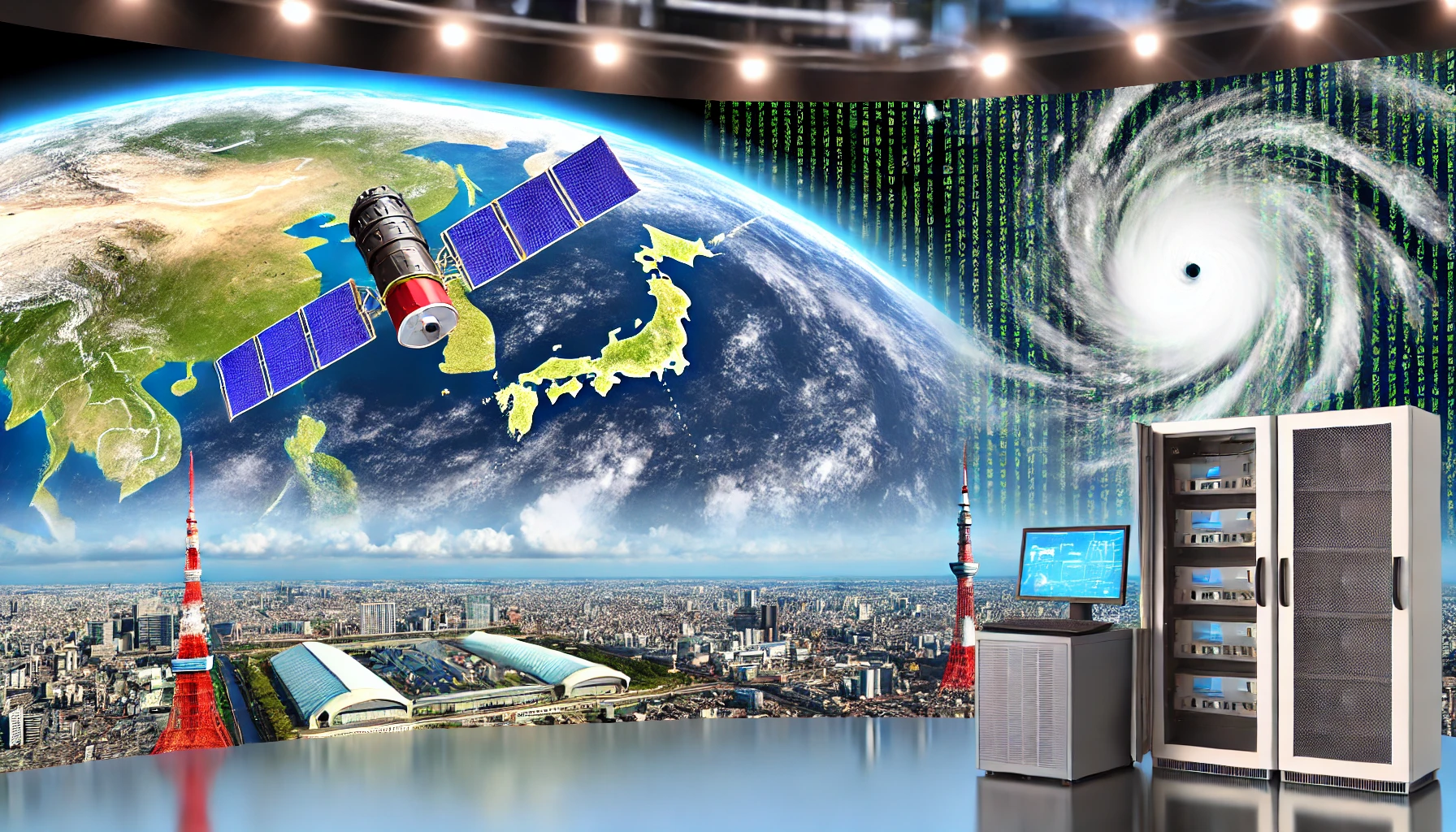Japan Weather Forecasting Technology Tracks Typhoons and Predicts Weather
Japan Weather Forecasting Technology: Japan, a country frequently facing natural disasters like typhoons, heavy rainfall, and earthquakes, has long been at the forefront of weather forecasting technology. With a blend of cutting-edge supercomputers, high-tech satellites, and an innovative weather infrastructure, Japan is making significant strides in providing accurate, timely weather forecasts.
In this blog, we will explore how Japan uses tools like supercomputers for weather forecasting, satellite technology, and typhoon tracking systems to protect its citizens and infrastructure from natural disasters. Let’s delve into the innovations that make Japan one of the world leaders in weather prediction.
Japan’s Weather Forecasting System: A Nation on Alert
Japan’s location in the Pacific Ocean makes it vulnerable to extreme weather events, especially typhoons. Accurate weather predictions are essential for preparing the public and minimizing damage. The Japan Meteorological Agency (JMA) is responsible for providing accurate forecasts and warnings for natural disasters.
How the Japan Meteorological Agency Operates
The Japan Meteorological Agency uses a variety of tools, including weather satellites, ground-based radar systems, and supercomputers, to deliver forecasts and warnings. The JMA’s forecasts range from daily weather predictions to advanced warnings of typhoons and heavy rainfall. Their success in preventing large-scale disaster casualties often depends on how quickly and precisely these forecasts can be delivered to the public.
The Role of Supercomputers in Japan’s Weather Forecasting
Japan’s ability to deliver accurate weather predictions hinges on its use of supercomputers for weather forecasting. These advanced machines process vast amounts of data collected from satellites and other sources, enabling precise predictions about weather patterns.
The Cray XC50 Supercomputer: Speed Meets Precision
One of the most powerful tools in Japan’s weather forecasting arsenal is the Cray XC50 supercomputer. The JMA uses this system to process complex weather models, analyze incoming data from satellites, and simulate future weather scenarios. Capable of trillions of calculations per second, the Cray XC50 allows meteorologists to forecast weather with remarkable accuracy.
Fugaku Supercomputer: A Step Beyond
Japan also boasts the Fugaku supercomputer, which is currently one of the most powerful in the world. Fugaku’s incredible processing power allows it to perform more detailed simulations than ever before, modeling everything from local rainfall to global climate patterns. Thanks to Fugaku, Japan can deliver quicker, more accurate forecasts, which are critical for responding to typhoons and other natural disasters.
Himawari Satellite: The Eye in the Sky
In addition to supercomputers, Japan’s weather forecasting system relies on satellites, particularly the Himawari satellite. Launched by the Japan Meteorological Agency, the Himawari satellite plays a crucial role in gathering real-time weather data.
Real-Time Data for Accurate Predictions
The Himawari satellite provides continuous weather coverage over Japan and the surrounding regions. It captures high-resolution images every 10 minutes, allowing meteorologists to monitor cloud formations, ocean temperatures, and other critical indicators of severe weather. This data is sent to the JMA, where it is processed using supercomputers like Fugaku and Cray XC50.
Typhoon Tracking in Japan: How Technology Saves Lives
Typhoons are a major threat to Japan, and accurate typhoon tracking is essential to protect lives and infrastructure. Japan’s combination of satellite imagery, supercomputers, and on-the-ground systems allows the country to track typhoons with precision.
How Japan Tracks Typhoons
When a typhoon begins to form, data is collected from the Himawari satellite and radar systems. This information is then processed by supercomputers to predict the typhoon’s path, wind speeds, and potential impact zones. Typhoon tracking in Japan has advanced to the point where forecasts can predict the timing and strength of landfall, giving residents critical time to prepare.
Japan’s Weather Satellites: More Than Just Himawari
While the Himawari satellite is the most well-known of Japan’s weather satellites, it is not the only one. Weather satellites in Japan provide continuous coverage, helping the JMA deliver precise weather reports that can range from daily forecasts to long-term climate monitoring.
The Importance of Weather Satellites in Forecasting
These satellites gather information on ocean temperatures, cloud formations, and atmospheric pressure. Together with on-the-ground data, satellite information is essential for making accurate weather predictions. For example, data from Himawari helped the JMA issue early warnings for Typhoon Hagibis in 2019, reducing the impact on the population (SuperCharge Ads).
The Tokyo Skytree: A Unique Weather Station
Beyond satellites and supercomputers, Japan also utilizes unique weather-monitoring infrastructure like the Tokyo Skytree. The Skytree, while primarily a television broadcasting tower, doubles as a weather station, providing valuable data on local weather conditions.
Weather Monitoring at the Skytree
The Tokyo Skytree weather station collects data on temperature, humidity, and wind speeds at varying heights, contributing to localized weather predictions for Tokyo. Its height allows it to monitor weather conditions high above the city, offering insights that ground-based stations cannot provide.
Looking to the Future: Advancements in Japanese Weather Technology
Japan’s investment in weather forecasting technology shows no signs of slowing down. The country continues to develop new satellites, improve the capacity of supercomputers, and advance prediction models for everything from typhoons to global climate trends.
Future Developments in Weather Forecasting
Japan is already looking to launch new satellite models to complement the Himawari satellite and enhance its forecasting capabilities. Additionally, continued improvements in Fugaku will allow for even more precise weather simulations, especially for large-scale disasters like typhoons. As weather patterns become more unpredictable due to climate change, Japan’s focus on weather prediction will play an increasingly critical role in disaster preparedness.
Japan’s World-Leading Weather Forecasting Technology
Japan’s weather forecasting technology is among the most advanced in the world. From the power of supercomputers like Fugaku and Cray XC50 to the continuous data provided by the Himawari satellite, Japan has developed a robust system that allows it to predict weather with incredible accuracy. This technology is especially important for typhoon tracking, where early warnings can save lives and protect infrastructure.
As Japan continues to refine its forecasting capabilities, the country will be better equipped to face natural disasters head-on, providing valuable lessons for the rest of the world. For more insights on how technology is shaping global forecasting and prediction, visit Regent Studies for in-depth educational resources.




